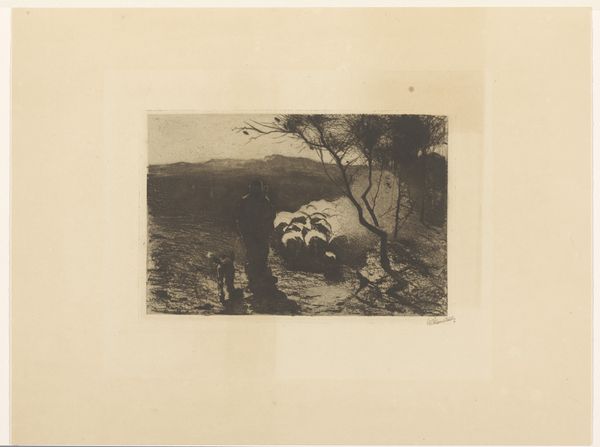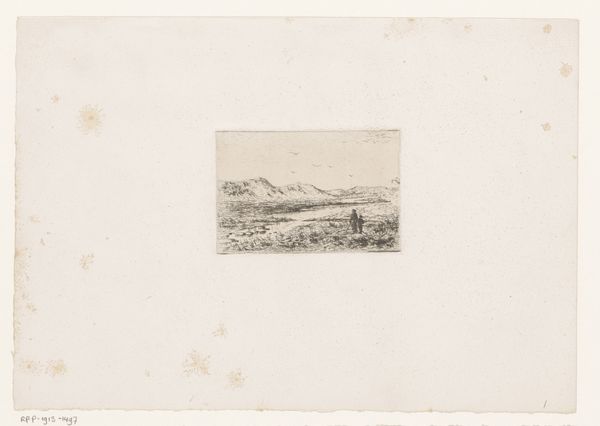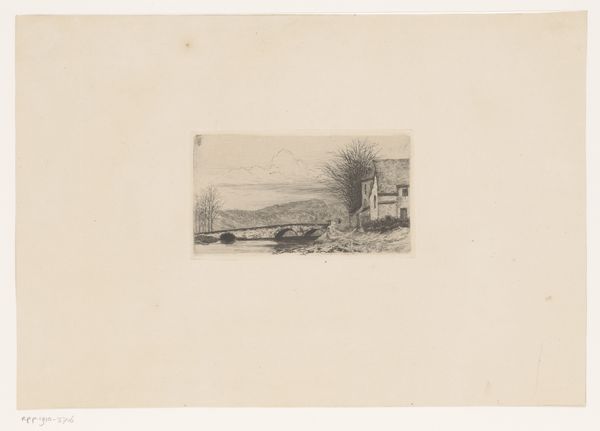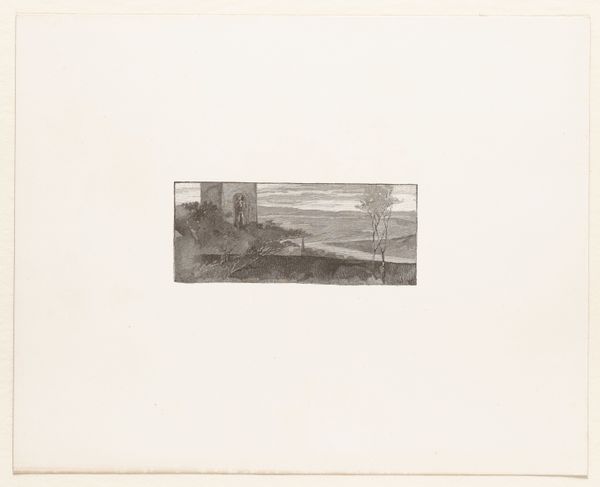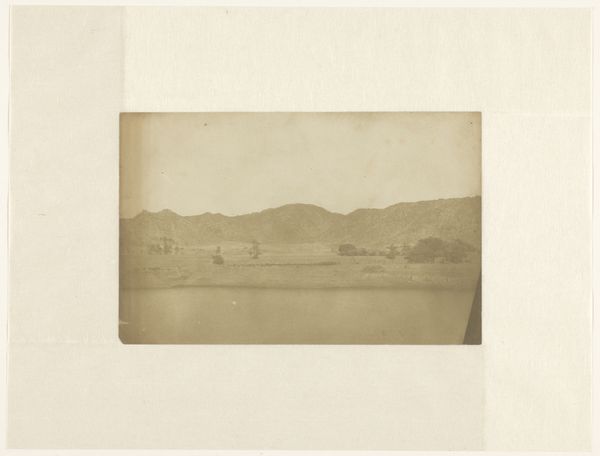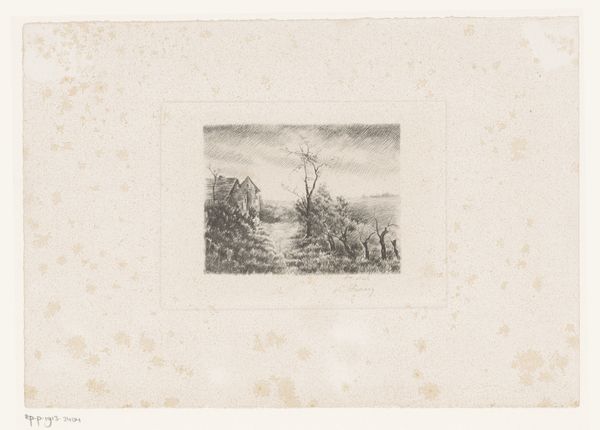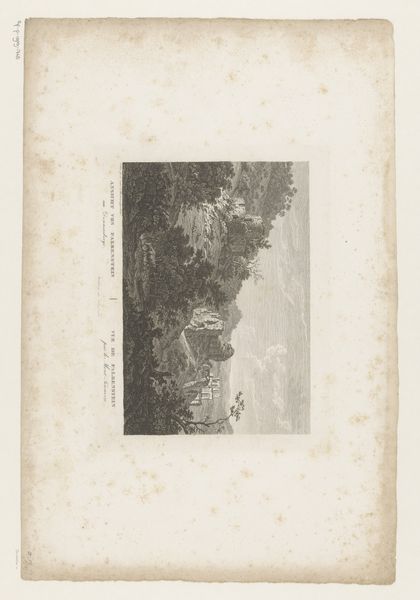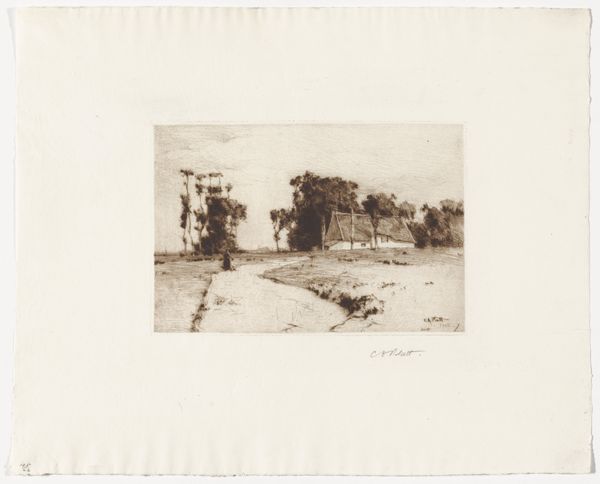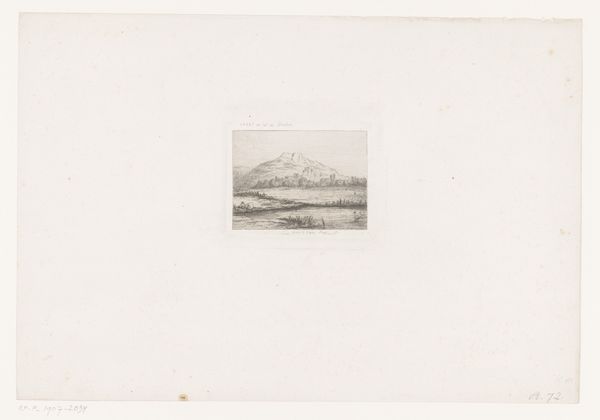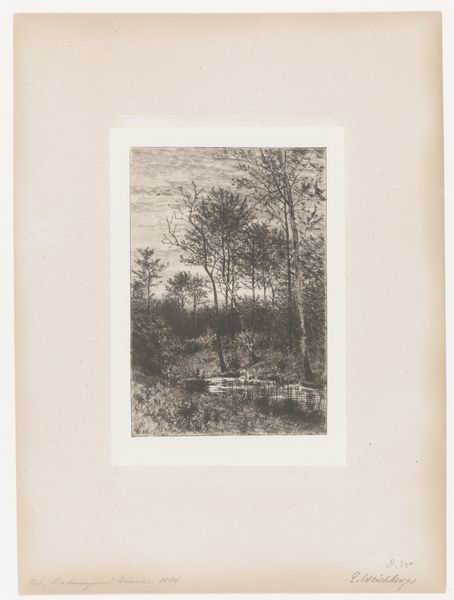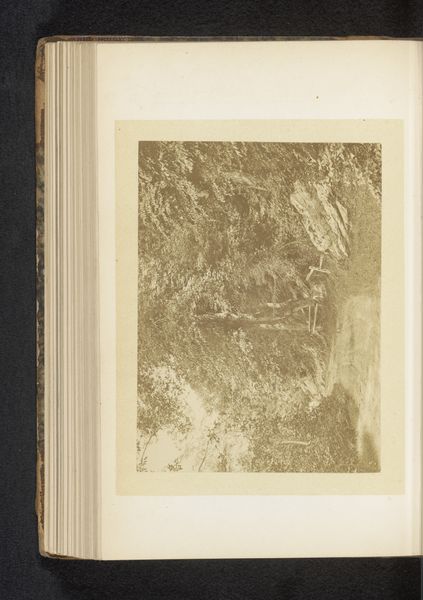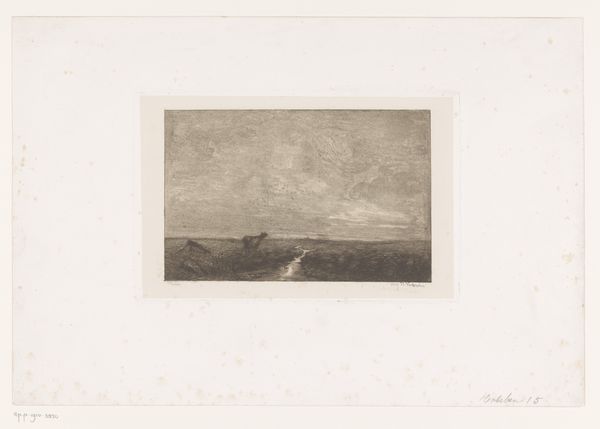
drawing, print, etching
#
drawing
#
dutch-golden-age
# print
#
etching
#
landscape
#
geometric
Dimensions: height 80 mm, width 135 mm
Copyright: Rijks Museum: Open Domain
Curator: The artwork we're observing is titled "Landweg en brug bij de duinen," which translates to "Road and Bridge by the Dunes," attributed to Chris Lebeau, and thought to have been made sometime between 1888 and 1945. It's an etching. Editor: Immediately, the intricacy strikes me. It's not just a landscape, but a deep study in textures achieved through labor intensive, repetitive markings. You feel the craft. Curator: Indeed. Lebeau was quite involved in the Dutch Arts and Crafts movement. This work, as an etching, democratizes art by making it reproducible. The politics of access are intrinsic. Editor: Etching… It speaks of acid baths, labor, the hand pushing against the material. And, note the subject: A simple bridge over a path in nature, highlighting human impact. Curator: Exactly. It presents a vision of the Dutch landscape, shaped by human intervention. We see not untamed nature, but a world molded by agricultural and social needs. Editor: The marks mimic the actual experience of walking through dunes – the scrubby foliage, the damp earth beneath, your boots hitting each stone along the path, very sensual in the process and also its representation. Curator: It also evokes the rise of national sentiment at the turn of the century. Lebeau positions the common person squarely within their national landscape, connecting identity and place. Editor: Even the print itself becomes a common artifact then, affordable, reproducible, and widely accessible across society, which challenges older, traditional forms of artworks. Curator: Right, art not as elite commodity, but a tangible part of everyday life. That makes a statement on what art can be and who it is for. Editor: It’s an unassuming yet quietly revolutionary little thing, brimming with possibilities for changing attitudes toward the hierarchy between crafts, labor and fine art. Curator: Yes, its unassuming nature is deceptive. It's a powerful statement about the role of art and the representation of the everyday within society. Editor: So, we began by talking about the craft itself, and we wound up discussing social transformation and the accessibility of artwork, what a wonderful exploration. Curator: Exactly. I came at this by looking into the social implications, which made us think of how powerful art can be!
Comments
No comments
Be the first to comment and join the conversation on the ultimate creative platform.
